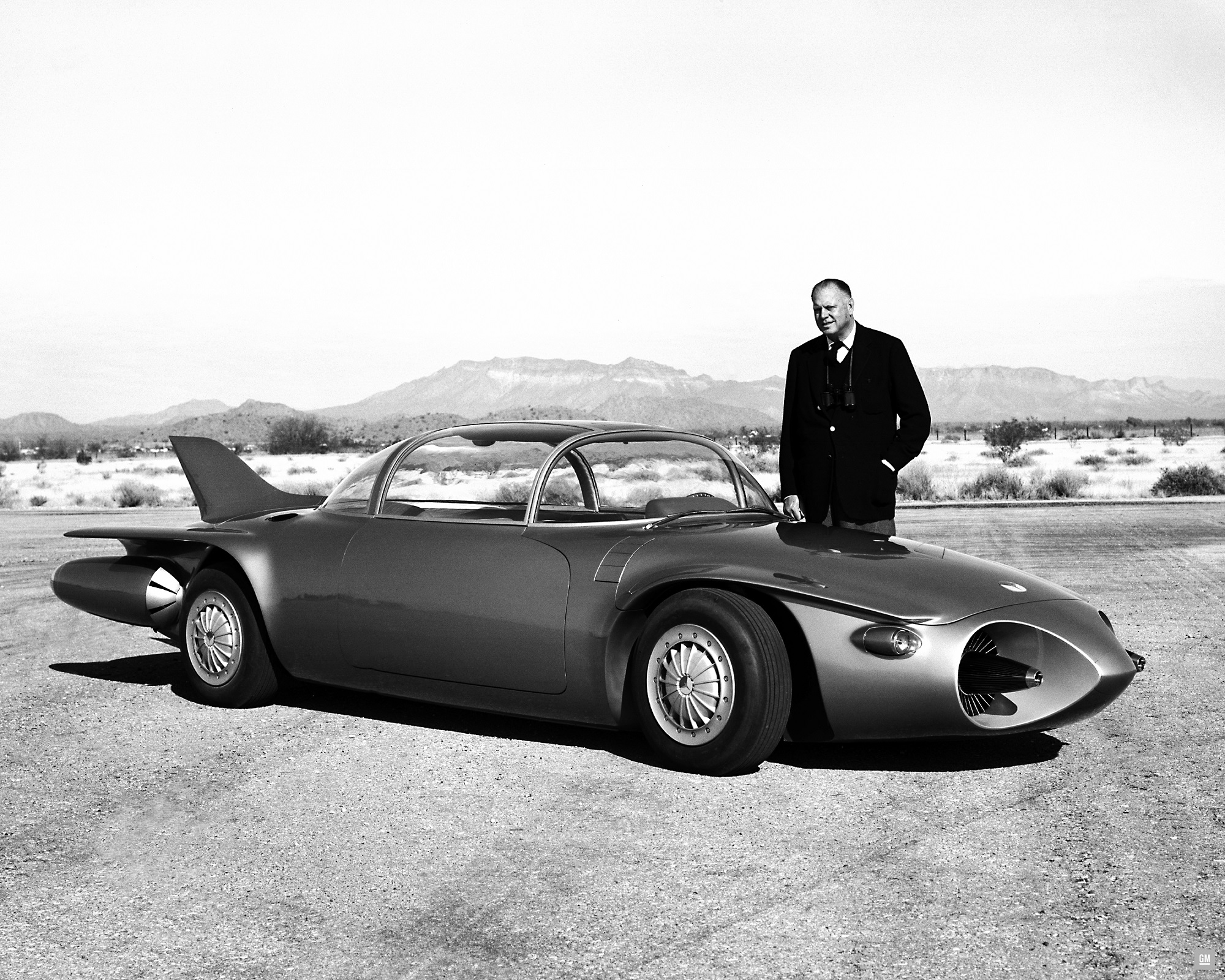General Motors’ legendary leader Alfred Sloan devised a strategy of offering “a car for every purse and purpose”, delineating price and features between the automaker’s divisions. But, Sloan knew he also needed to differentiate his brands, and General Motors itself, through design. He eventually lured Harley Earl, who cut his teeth designing custom bodies for Hollywood elite at his father’s coachworks in L.A., to form GM’s “Art and Color Section”, the auto industry’s first in-house design group.

Some of Earl’s early hits include the 1927 LaSalle, a junior model to Cadillac, 1934 Cadillac V-16 Aerodynamic Coupe, and 1938 Cadillac Sixty Special. During the war, Earl’s team saw the P-38 Lightning with its twin boom tail, which inspired tailfins on the 1948 Cadillacs.

The story of Harley Earl’s life, and his influence on the auto industry…and popular culture, is chronicled in the new book “FINS: Harley Earl, the Rise of General Motors, and the Glory Days of Detroit” by William Knoedelseder.
“I grew up in the car business,” Knoedelseder said. “In the 1950s, my dad was an executive at Chrysler. Cars meant everything to me. One night in 1955, my dad pulled up in a DeSoto Firedome hardtop, painted pink and white. My dad was just like Don Draper from Mad Men.”

The thoughts of those flashy 1950s cars with big fins stayed with Knoedelseder. Years later, he was researching the era for a television series he was pitching when he discovered Harley Earl. Of course, his dad and the towering GM designer had to be part of it.
“When I started pitching it around town, they weren’t so interested in my dad, but were very interested in this Harley guy,” Knoedelseder said. “The more I looked into it, I became fascinated with him. The book became more than a story about him, and more about the time. Fins became a metaphor for the 1950s.”

While Earl is best known for the extravagant 1950s, his influence on GM began decades earlier. Alfred Sloan realized car buyers wanted more than the never-changing black Model Ts that Henry Ford built. Instead, he would give drivers a route of colors and features, rising from Chevrolet at the bottom through Pontiac, Oldsmobile, Buick, and finally Cadillac, as careers and wealth progressed. He also implemented annual model changes as enticement for drivers to trade up.
While Sloan was a brilliant businessman who transformed the auto industry, he was no artist. So, he recruited Harley Earl to create the cars he envisioned.

“What would have happened if Sloan had not backed Harley the way he did,” Knoedelseder asks? “Harley Earl came up with a way to change cars often. He was from the period when industrial design came about – like the Steve Jobs of his day. He had a sense that, Americans at least, aspired to more than just transportation in their automobiles. He was the first ‘engineer of desire’. Sloan thought cars should look different, but Harley wondered what they should embody.”
To give drivers glimpses of the future his designers were creating, he came up with the traveling Motorama show, which ran 1949-1961, and concept cars to fill their turntables. Cars like the 1950 LeSabre, 1953 Corvette, 1956 Buick Centurion, 1959 Cadillac Cyclone, and Firebird series became crown jewels of the automaker. These cars previewed features we now find commonplace: Rearview cameras, panoramic roofs, and radar guided cruise control. The automated highways GM’s cars predicted are just over the horizon.

Given how different the shape of these cars are from today’s aero computers on wheels, Earl would likely have strong opinions of modern GM products.
“He would think all cars look alike, not very distinctive, not much color,” says Knoedelseder, who drives a black Ford Fusion. “He would be disappointed in the lack of exuberance in style. The ’57/’58 Pontiacs and Cadillacs were garish, but amazing pieces of sculpted metal. Demand more color in your cars!”

It took a determined man of grand vision to bring these cars to life – a man with the drive of a Hollywood mogul.
“I spent a number of years working with Barry Diller,” Knoedelseder said. “He was difficult to work with, but a visionary. You could see he was after something. When I’m hearing stories of Harley, I get what kind of guy he was.”
Storm Forward!
Send comments to Casey at AutoCasey@aol.com.

